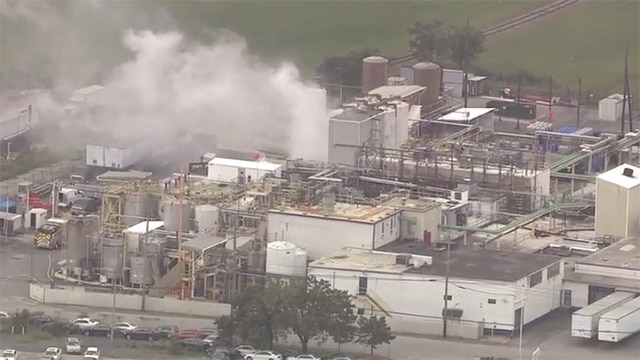Officials in Baltimore, Maryland launched into emergency response mode after a chemical leak occurred in the area. Local news reported that Chlorosulfonic acid was released into the air during an incident at a chemical plant, causing immediate danger for the everyone in the area. The city responded by issuing a shelter-in-place advisory for residents within a one-mile radius of the spill.
Shelter-in-place describes the response to a non-human related threat and is distinctly different from “lockdowns” or “lockouts” which are issued when a dangerous person is in the area. Severe weather and airborne hazards spark shelter-in-place situations. Weather is the most common factor of shelter-in-place scenarios. Many schools routinely conduct shelter in place drills for weather related emergencies by having staff and students respond to the most structurally sound portion of the facility away from exterior windows and doors.
As was the case in Baltimore, schools may be required to shelter in place due to airborne hazard which are often the result of tanker truck and commercial railway spills, or accidents at factories or plants. Because the reason you may be asked to shelter in place may be very different, your school’s response needs to be tailored to each specific threat.
After the spill in Baltimore, city officials responded by quickly advising people in the surrounding areas to shelter-in-place. They activated social media accounts and the phone emergency alert systems to advise people of the danger. The alerts were effective because they were timely, concise and provided specific direction. One tweet read, “Due to @BaltimoreFire activity, residents in 21060 21225 & 21226 are being asked to shelter-in-place, close windows & limit time outside.” These alerts were crucial as they sparked emergency responses throughout the affected area.
Update:
Due to chemical leak, SHELTER IN PLACE ordered for 1 mile radius of 3400 Fairfield Rd, Curtis Bay, included 21060 21225 21226. pic.twitter.com/OhtusVEVJv— Baltimore City OEM (@BaltimoreOEM) September 18, 2017
If you learn your school is under a shelter-in-place advisory due to a hazardous release, would you be prepared? Schools should have specific shelter-in-place response protocols, customized to their building. Some general guidelines are:
• Designate a location or locations with few windows that can fit staff, students and visitors.
• Close all windows and doors.
• Seal all cracks and vents using plastic sheeting and duct tape.
• Have additional supplies including nonperishable food, water, first aid kits, battery powered radios and telephones in order to be able to communicate with concerned parents.
• Shut off HVAC systems.
• Communicate to ensure everyone knows when the shelter-in-place begins and ends.
Releases of hazardous material spills can happen anywhere, so have a plan that you can efficiently execute to minimize exposure to staff and students. FEMA provides a comprehensive list that schools can reference for specific guidance. The California Department of Public Health, Know When and How to Shelter-in-Place for Schools is another good resource for schools.
Luckily, the shelter-in-place in Baltimore only lasted for an hour and there were no reported hospitalizations due to this accident. Still, it serve as a reminder that emergency situations of any type can happen at any time and school administrators and staff need to be prepared beforehand. Stay safe and have a plan.

